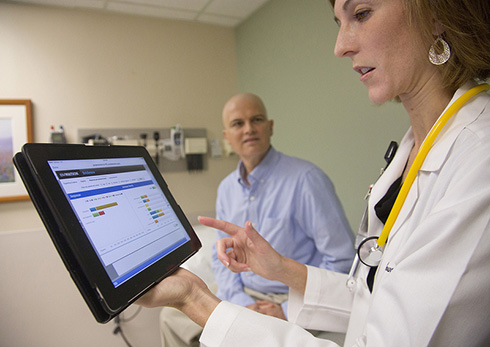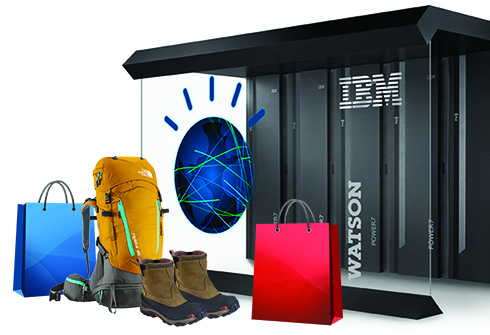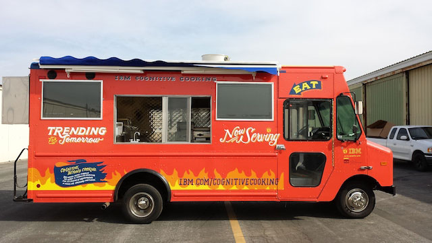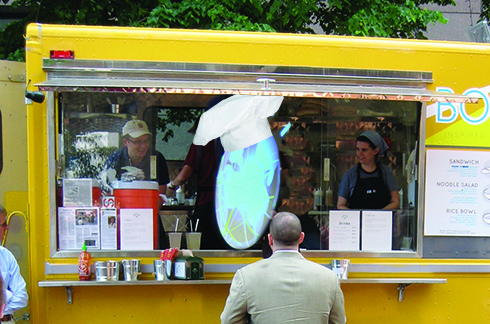In the three years since winning “Jeopardy,” Watson hasn’t made many headlines, but the ever-evolving supercomputer has gotten smarter, faster and smaller while dipping its toes into a lot more than trivia.
On Valentine’s Day 2011, Watson took on Ken Jennings and Brad Rutter in a three-game tournament of “Jeopardy,” beating two of the most successful contestants in the game show’s history. Badly. Watson ended the game with a score of US$77,147, more than triple Jennings’ $24,000 and Rutter’s $21,600.
“Since ‘Jeopardy,’ there’s been a lot of application development that’s gone on top of Watson, and a lot of base improvements,” said Jerry Cuomo, IBM fellow and CTO of IBM WebSphere. “We’ve focused on bringing Watson to healthcare, financial markets, retail, really expanding it beyond the game-show model.”
In January, IBM gave Watson a billion-dollar vote of confidence, investing that amount in the new Watson Group focusing on research and development of cloud-based cognitive applications and services. Only a month and a half later, at Mobile World Congress, the Watson Group launched the Watson Mobile Developer Challenge, a global competition giving developers a chance to leverage the supercomputer’s APIs into a new generation of mobile apps.
(Related: What Watson was up to since “Jeopardy”)
At the time of Watson’s “Jeopardy” appearance, it was the size of a master bedroom. It’s now been reduced to the size of three stacked pizza boxes, and uses hypothesis generation techniques such as data mining, optimized algorithms and text analytics to answer questions. According to IBM, Watson’s engineers have also reduced its codebase by 30%, improved response speed by 240%, and increased question length from two sentences to 14 pages.
Healthcare, retail and food trucks
Using a new natural language processing feature, Watson can now decipher industry-specific data such as doctor’s notes and medical jargon, bringing its superhuman intelligence to the healthcare field.
“Think about an oncologist giving a diagnosis to their cancer patient,” Cuomo said. “The doctor checks their Watson mobile app, and it gives them a different diagnosis than they expected. Maybe the reasoning is because they’re a mere mortal and couldn’t have read all the reference material to make the correct diagnosis. In this context, Watson helps not only the quality of the results but the reasoning behind the results.”
Watson’s foray into the medical field began in 2011 when IBM partnered with managed healthcare provider WellPoint to launch Watson-based healthcare apps. It continued in 2012 with a partnership between IBM and the Memorial Sloan Kettering Cancer Center to pilot a Watson-based cancer diagnosis and treatment tool.#!Learning with each new iteration and outcome, Watson’s medical knowledge improved as WellPoint clinicians processed 25,000 historical cases to help teach it, and nurses spent more than 14,700 hours doing hands-on training with it. The Watson-powered oncology diagnosis and treatment solution has looked at more than 600,000 pieces of evidence and 2 million pages from medical journals, articles, textbooks, research and clinical trials.
“Watson passed the medical boards using its medical data and more so the linguistic optimization around medical vocabulary,” Cuomo said. “We really honed its ability to do that, to get deeper into the domain, which also helped us optimize the linguistic parsing capability to support terms that are industry-specific.”

Beyond medical, Watson has also been streamlining and personalizing the online shopping experience. Fluid, Inc., a software company that builds online shopping portals for retail businesses, has rolled Watson into the Fluid Expert Personal Shopper, or XPS.
“We’re all very familiar with shopping,” said Neil Patil, president of the Fluid Software Group. “You typically go to Google or Amazon and type in keywords that you think represent what you’re looking for. The power of what Watson provides through the XPS is we can digest all the content in the world around a category or product, and you as a shopper can ask questions naturally and just the right information will surface for you to make a product decision.”

The Watson-powered XPS eschews typical search-based online shopping, allowing shoppers to enjoy a natural conversation about what they’re looking for in a product. One early adopter of the Fluid prototype is The North Face. Shoppers enter their preferences, and the app acts like an experienced in-store salesperson helping find the right jacket or hiking equipment to fit their needs and taste. Fluid hopes to have the XPS available to the public this year.
“Instead of 10 minutes of surfing reviews and comments, we envision the experience being much like having an expert personal shopping assistant at your beck and call,” Patil said. “As if you were walking into The North Face store and [XPS] is learning your preferences, asking you questions and showing you different products as you’re walking up and down the aisles.”

Watson’s latest adventure has come through a new partnership with New York’s Institute of Culinary Education, resulting in Watson’s Cognitive Cooking program.
The Watson food truck (above) asks customers for a few food preferences and recommendations on a tablet, then narrows down meal choices from trillions of dishes to a few hundred. Watson keeps asking the customer about specific ingredients and different cuisines until it spouts out the winning dish based on the user’s taste buds, which the truck’s chef then prepares.
The truck is largely a publicity vehicle meant to showcase Watson’s consumer-facing applications and predictive capabilities. It debuted at IBM’s Pulse conference in Las Vegas, and then took a road trip down to SXSW in Austin. It’s cooked up everything from Swiss-Thai asparagus quiche to an Austrian chocolate burrito and Armenian-style gumbo.

Mobile, the cloud and beyond
Over the past few years, IBM has extended Watson’s reach into new industries and applications, but now it’s turning to developers to let Watson roam free.
Throughout this month, during the IBM Watson Mobile Developer Challenge, developers are submitting proposals for the next groundbreaking Watson-powered mobile app. After the March 31 deadline, a panel of judges from the Watson Group will whittle the ideas down to 25 finalists by April 28, who are then given access to the Watson API and collection of tools known as “the sandbox” to build a prototype of their app.
“One of the things Watson hasn’t done yet is gotten out of the computer,” Cuomo said. “It hasn’t yet peeked its head into the tactical world. When I ask a question, where am I? What’s my heart rate? Am I in traffic? That data alone could affect the accuracy and confidence of the answer. By combining mobile and Watson, we’re potentially taking Watson out of a box. When you look at artificial intelligence and computing, that’s one of the missing pieces.”
The top five finalists will pitch and demo their apps to judges in a live session on May 19, and the three winners, announced May 31, will be given IBM support and continued access to the sandbox to build their Watson-powered mobile apps. The winners will also work with the IBM Interactive Experience team to promote and commercialize their apps for the open market.






